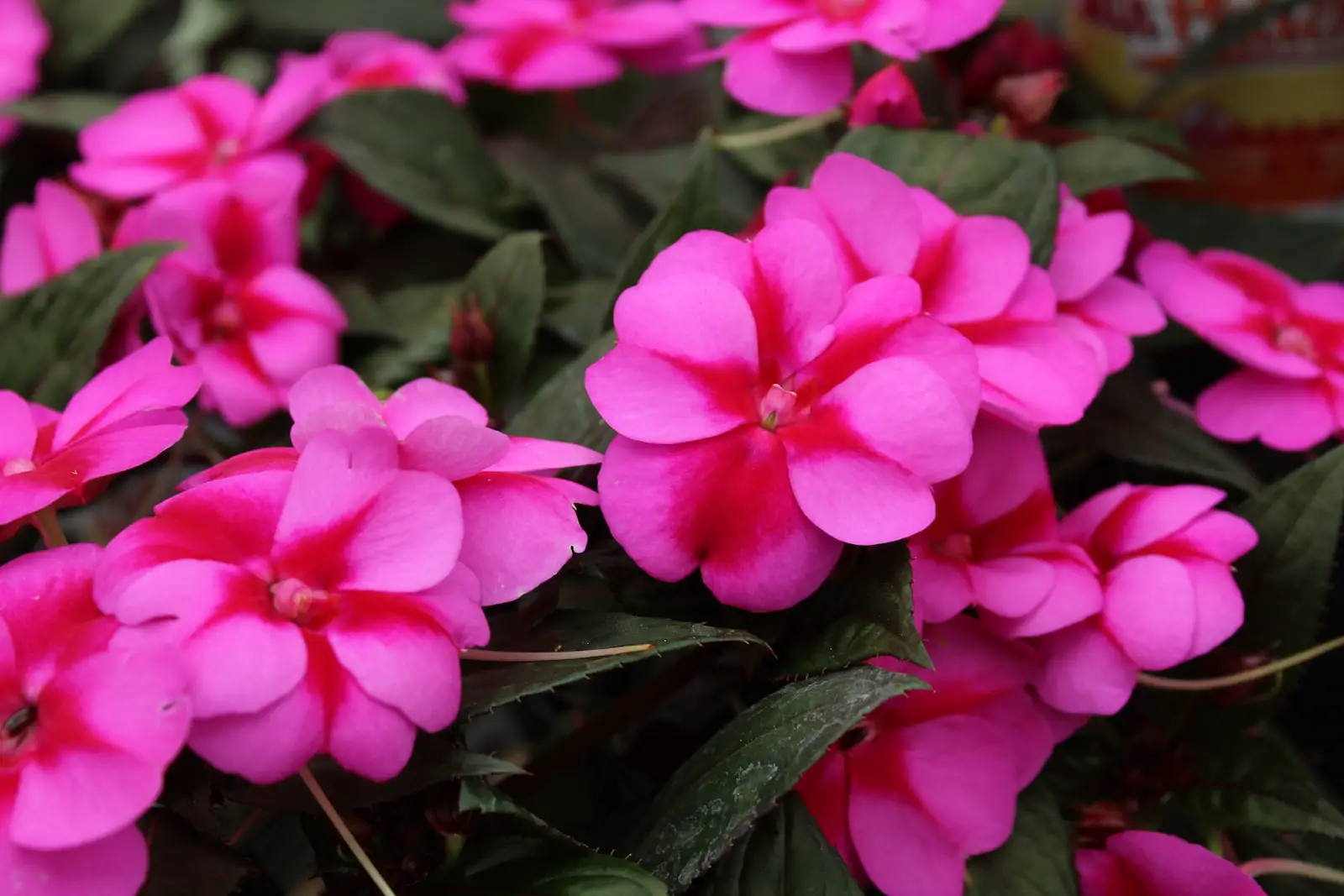In the world of garden flora, Impatiens stand out for their vibrant colors and their ability to brighten up shady spots. These captivating annuals are favored by gardeners around the globe for their shade-loving nature and continuous bloom throughout the growing season. The genus name “Impatiens” itself refers to the impulsive way their seeds burst from their pods when they’re ripe, a delightful feature of these charming flowers.
Impatiens have been a staple in shade gardens for many years, mainly because they offer a variety of colors – from white and soft pastels to vibrant reds, pinks, and purples. The blooms, resembling a shield surrounded by a standard, give them another common name: “touch-me-not.” This is not because they’re sensitive, but due to the aforementioned seed dispersal mechanism. Whether you’re a novice gardener looking for easy-to-maintain plants or an expert aiming to add some color to a shaded area, Impatiens are an excellent choice.
However, like all plants, Impatiens come with their care specifics. To keep them thriving and to enjoy their splashes of color throughout the summer, you’ll need to ensure their needs are met. This guide provides an in-depth look at the care and challenges associated with growing Impatiens.
| Attribute | Details |
|---|---|
| Common Names | Impatiens, Busy Lizzie, Touch-me-not |
| Botanical Name | Impatiens walleriana (among others) |
| Family | Balsaminaceae |
| Plant Type | Annual |
| Mature Size | 6-30 inches depending on variety |
| Sun Exposure | Partial to Full Shade |
| Soil Type | Moist, Well-drained |
| Hardiness Zones | 10-11 (usually grown as annuals) |
| Native Area | East Africa |
Impatiens Care
Growing Impatiens is a joy for most gardeners, given their minimal care requirements. They’re perfect for those shaded areas where many plants fail to flourish. Their vivid blossoms make them a favorite choice for container gardening, borders, and bed plantings.
For optimal growth, it’s crucial to ensure that Impatiens are planted in well-draining soil and that they receive consistent moisture. Dry conditions can cause stress and reduce blooming, so regular watering is necessary. While they are low-maintenance plants, a bit of attention will ensure they remain vibrant throughout the season.
Light Requirement for Impatiens
Impatiens prefer partial to full shade. They thrive in locations where they receive filtered sunlight or are protected from the harsh afternoon sun. While they can tolerate some morning sun, prolonged direct sunlight can cause them to wilt or reduce flowering.
Soil Requirements for Impatiens
These plants love rich, well-draining soil. Enhancing garden soil with compost or organic matter can boost its fertility and drainage capacity. Ensure that the soil remains moist, but not waterlogged, as this can lead to root rot.
Water Requirements for Impatiens
Impatiens have a high water requirement. The soil should always be kept moist, but not soggy. In particularly hot climates or during dry spells, more frequent watering may be needed. Mulching around the plants can help retain soil moisture and reduce the need for frequent watering.
Temperature and Humidity
Impatiens are sensitive to frost and thrive in warm conditions. They prefer temperatures between 60-75°F (15-24°C). High humidity is beneficial for these plants, making them perfect for areas with humid summers.
Fertilizer
While Impatiens can grow well without fertilization, for the best blooms, feed them with a balanced, water-soluble fertilizer every two weeks during the growing season.
Pruning Impatiens
Regularly pinching back Impatiens can encourage a bushier growth and more blooms. Remove faded or dead flowers to promote continuous flowering throughout the season.
Propagating Impatiens
Impatiens can be easily propagated through stem cuttings. Take cuttings of 4-6 inches, remove the lower leaves, and plant them in a soil-less potting mix. Keep the soil moist and the cuttings should root in a few weeks.
How To Grow Impatiens From Seed
Start Impatiens seeds indoors 8-10 weeks before the last frost date. Sow the seeds on the soil surface and lightly press them in, as they need light to germinate. Keep the soil consistently moist and provide a temperature of around 70°F (21°C).
Common Pests & Plant Diseases
Aphids
These tiny insects can suck the sap from Impatiens, causing distorted growth. Insecticidal soaps or neem oil can help control them.
Downy Mildew
A fungus that causes yellowing leaves and white, fluffy growth on the underside. Ensure good air circulation and avoid overhead watering to prevent it.
Common Problems With Impatiens
Wilting
Caused by underwatering or root rot due to overwatering. Ensure consistent moisture and well-draining soil.
Leggy Growth
This can result from insufficient light. Move the plants to a brighter location or pinch them back to encourage bushier growth.
Pro Tips
- Always ensure the soil remains consistently moist.
- Plant Impatiens in groups or clusters for a more striking visual impact.
- While they love shade, a bit of morning sunlight can boost their bloom.
- Use them in containers or hanging baskets for a cascade of color.




